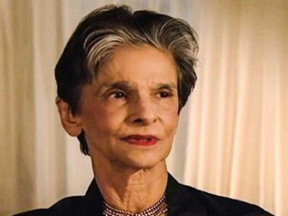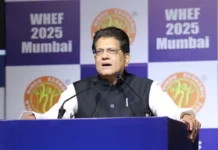 MUMBAI: The seafront bungalow on Malabar Hill built by Pakistan founder Mohammed Ali Jinnah was at the centre of a prolonged battle between his daughter Dina Wadia and the Indian government.
MUMBAI: The seafront bungalow on Malabar Hill built by Pakistan founder Mohammed Ali Jinnah was at the centre of a prolonged battle between his daughter Dina Wadia and the Indian government.
Wadia died in New York on Thursday at the age of 98. Her petition to regain control of her childhood home is still pending for a final hearing the before a division bench of the Bombay High Court.
The palatial ‘Jinnah House’, originally known as South Court, was witness to meetings of the Muslim League and a crucial meeting between Mahatma Gandhi, Jawaharlal Nehru and Jinnah before partition.
Wadia, born to Jinnah’s Parsi wife, Rattanbai Petit, in London in August 1919, had insisted that the stately house, designed in European-style architecture, be called South Court.
In 2007, Pakistan’s then president Pervez Musharraf had expressed his desire to acquire the house as Pakistan’s property to convert it into a consulate.
The same year (in August 2007), Wadia (then 88), knocked the doors of the Bombay High Court with a petition claiming that the title of the mansion be handed over to her as she was the only heir to Jinnah.
Wadia spent many years in Mumbai but had been living in the US for the past few decades. In her petition, she said she wished to spend her remaining years in the house in Mumbai where she had spent her childhood years.
Wadia, in the petition, had claimed that the bungalow could not be classified as “evacuee property” as her father had died without leaving behind a will.
The petition last came up for hearing before a division bench of Justices S V Gangapurwala and A M Badar on July 28 this year which adjourned it simply to September 7. It has not come up for hearing since then.
Soon after her petition was filed, the high court had directed the Union government to file their affidavit in response.
In October 2007, the government filed its affidavit stating that the Jinnah House belongs to the government and that only Jinnah’s sister Fatima or her legal heir can claim right over the property.
Wadia had, however, claimed that she was the only heir of Jinnah and hence the title of the house should be handed over to her.
According to Wadia, the (then) state of Bombay took over the property, because Fatima was the trustee of Jinnah’s will, and had been declared an evacuee (those who migrated to Pakistan post-partition) in 1949.
Wadia, in her petition, claimed that her father’s will was not probated by the Bombay High Court and therefore had no effect on any operation of law.
Fatima, therefore, could not be the legal owner and so the house should be handed over to his (Jinnah) legal heir.
Also, she (Wadia) is the sole legal heir of Jinnah’s property, both under Hindu Law (applicable to Khoja community–to which Jinnah belonged–before Independence) or the Shia Muslim law, her petition claims.
In its reply, the Union government had claimed that her petition is not maintainable and is barred by prolonged and unexplained delay.
The reply filed by G Balasubramanian, deputy secretary to the Ministry of External Affairs, had stated that Government of India had issued a notification on June 27, 1949 under the Bombay Evacuee Property Act, by which the possession of Jinnah House was vested with the Custodian.
On June 10, 1955, another notification was issued under the Displaced Persons (Compensation and Rehabilitation) Act, by which the right, title and interest was vested in Government of India.
Jinnah had bequeathed the Jinnah House to his unmarried sister Fatima by his will dated May 30, 1939. Fatima migrated to Pakistan at the time of partition and was declared an evacuee and hence the property was taken over by the Indian government under the Bombay Evacuee Property Act, the affidavit filed by the government had said.
In August 2010, the high court had ordered for status quo to be maintained in the matter, but had permitted the Centre to complete the renovation work of the bungalow without making any structural changes.
Wadia wanted the mansion, built by her father in 1936 at a cost of Rs 2 lakh, be called South Court.
In a newspaper interview during a visit to Mumbai in 2008, she had said, when asked about the Jinnah House bungalow in south Mumbai, “Why do you keep calling it Jinnah House? That’s the name the British gave it. Its real name is South Court. Why don’t you refer to it by its original name?”
In 2004, she visited Jinnah’s tomb in Karachi, along with Nusli and his two sons. In the visitors’ book, she then wrote, “May his dream for Pakistan come true.”-PTI






